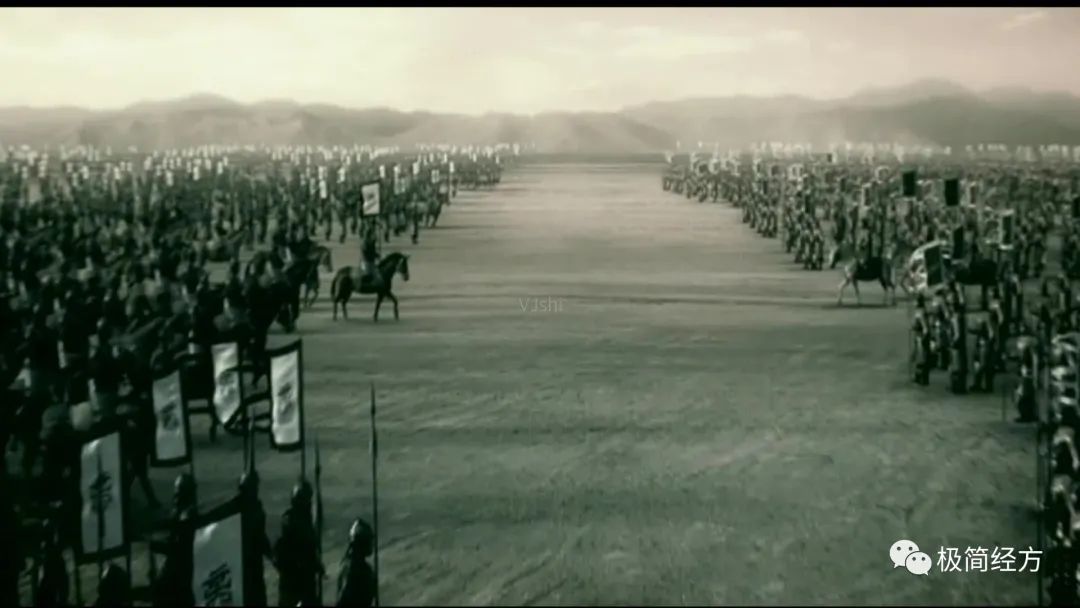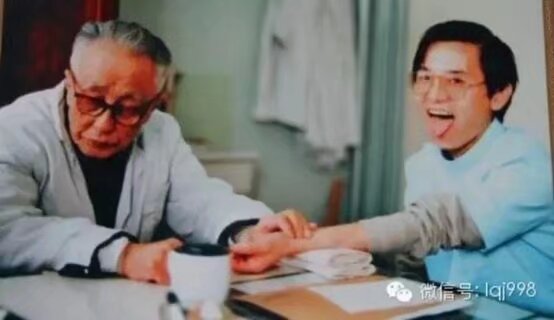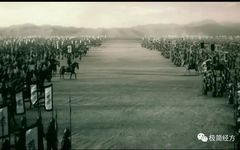In the worldview of Traditional Chinese Medicine (TCM), the process of resisting disease is illustrated as follows:

The human body is likened to a city; disease is viewed as an external enemy. Initially, when the enemy approaches, we engage in battle at the city walls, which represents the exterior syndrome (biao zheng). If our forces are strong, we can repel the enemy at the walls, resulting in symptoms such as headache and fever, indicating a yang exterior syndrome (yang biao zheng). However, if our forces are weak and cannot fend off the enemy, they may breach the walls, leading to symptoms without fever or aversion to cold, indicating a yin exterior syndrome (yin biao zheng).If we cannot repel the enemy, they may abandon the exterior and invade the interior, causing destruction and chaos, which represents a half exterior half interior syndrome (ban biao ban li). At this time, various symptoms may arise, leading to widespread suffering. If our forces are united and determined to resist, the enemy may retreat and advance alternately, indicating a yang half exterior half interior syndrome (yang ban biao ban li). Conversely, if our forces are dispirited and divided, the enemy may advance deeply, leading to mixed symptoms of cold and heat, indicating a yin half exterior half interior syndrome (yin ban biao ban li).When we have retreated to the center of the city, the enemy will also converge there, aiming to defeat us in one decisive battle, resulting in heavy casualties on both sides. This is indicative of an interior yang syndrome (li yang zheng). Therefore, interior syndromes are often perilous, and any misstep could lead to death. At this point, we must open the city gates, whether to the south or north, to expel the enemy, even at the cost of our own forces. If we retreat into the interior, our troops become exhausted, or if we open the gates to escape, the enemy can easily defeat us without a major battle, leading to an interior yin syndrome (li yin zheng). Excessive vomiting or diarrhea can lead to dire consequences.During this time, there may be stubborn enemies, or our forces may be ineffective in repelling them, leading to a division of troops into the interior before the enemy breaches the walls; there may also be instances where the enemy has not yet attacked but suddenly appears from within, indicating a concurrent disease (bing) or combined disease (he bing).The strategy of warfare is to combine the orthodox with the extraordinary to achieve victory. To repel the enemy at the exterior, we can use formulas such as Gui Zhi (Cinnamon Twig) and Ma Huang (Ephedra). If the walls are breached and the exterior is compromised, we can lure the enemy into the main thoroughfare, making it easier to assess the situation and encircle them, which corresponds to formulas like Cheng Qi (Purge the Qi) and Gua Di (Melon Seed). If the interior is kept open and resources are ensured, the enemy can easily retreat, preserving our lives. This is akin to having Wei Qi (Defensive Qi) for survival, and without it, there is death. If we allow the enemy to scatter into the houses and alleys, although it may not lead to immediate death, the harm will deepen, making it difficult to eradicate, thus caution is necessary. This represents a half exterior half interior syndrome (ban biao ban li), where symptoms can vary widely, making treatment challenging. If our forces are united and determined, aided by formulas like Chai Hu (Bupleurum), we can drive the enemy back and restore peace; if the troops are divided and symptoms of cold and heat are mixed, we can only use remedies like Wu Mei Wan (Mume Pill) to manage the situation, leaving life and death to fate.Thus, exterior syndromes are often dangerous, interior syndromes are perilous, and half exterior half interior syndromes are difficult to treat. We must prioritize treating the exterior in urgent situations; in critical cases, we must save the interior; for half exterior half interior syndromes, we must ensure both are stable before addressing them. We should convert what can be subdued into our advantage, which is the lawful approach. As for concurrent and combined diseases, we must divide our forces to repel the enemy, following the patterns and observing the pulse to understand the nature of the disease, treating according to the symptoms. If we use the appropriate formulas for the corresponding symptoms, we can achieve success!
Below is Hu Xishu’s theory of the Eight Principles. The Eight Principles refer to the exterior, interior, yin, yang, cold, heat, deficiency, and excess. In fact, within the exterior and interior, there should also be a half exterior half interior, which makes it nine principles. However, since the terms exterior and interior inherently include half exterior half interior, it is commonly referred to as the Eight Principles. I will explain them in order below:
Exterior, interior, and half exterior half interior: The exterior refers to the body’s surface, composed of skin, muscles, tendons, and bones, which is termed as the exterior. When pathogenic factors concentrate and react in this area, it is called an exterior syndrome (biao zheng); the interior refers to the body’s deep structures, including the esophagus, small intestine, and large intestine, which is termed as the interior. When pathogenic factors concentrate and react in this area, it is called an interior syndrome (li zheng); half exterior half interior refers to the area between the chest and abdomen, where various organs reside, termed as half exterior half interior. When pathogenic factors concentrate and react in this area, it is called a half exterior half interior syndrome (ban biao ban li zheng). In summary, the three—exterior, interior, and half exterior half interior—are fixed disease locations, meaning that regardless of the disease, the reaction can be categorized as exterior, interior, or half exterior half interior. Although sometimes two or three may appear simultaneously, they will never exceed these three.It is important to note that the disease location mentioned here refers to the location of the pathogenic reaction, not the location of the pathological change. This means that even if the pathological change is in the interior, if the pathogenic factors concentrate and react in the exterior, it is termed an exterior syndrome (biao zheng), or it can be said that the pathogen is in the exterior or the disease is in the exterior. Conversely, if the pathological change is in the exterior but the pathogenic factors concentrate and react in the interior, it is termed an interior syndrome (li zheng), or it can be said that the pathogen is in the interior or the disease is in the interior. The same applies to the other categories, which will not be repeated.Yin and yang: Yin refers to the yin nature, while yang refers to the yang nature. When a person is ill, it invariably affects the functional changes of the body, especially the metabolic functions. These changes can either be excessive or insufficient compared to normal. If excessive, the ill body will exhibit symptoms of hyperactivity, exuberance, or excitement, which are termed yang syndromes (yang zheng). If insufficient, the ill body will exhibit symptoms of decline, depression, or inhibition, which are termed yin syndromes (yin zheng). Therefore, although diseases are complex and variable, they can generally be categorized as either yin or yang.Cold and heat: From the perspective of symptom characteristics, there is a distinction between cold and heat. Cold refers to cold nature, while heat refers to heat nature. If the ill body exhibits cold symptoms, it is termed a cold syndrome (han zheng); conversely, if it exhibits heat symptoms, it is termed a heat syndrome (re zheng). Based on the above explanation of yin and yang, cold is associated with insufficiency and thus belongs to yin, while heat is associated with excess and thus belongs to yang. However, it is important to note that cold and heat are specific characteristics of yin and yang, so not all references to yin imply cold, nor do all references to yang imply heat. Therefore, there are diseases that are neither cold nor hot, but there are none that are not yin or yang.Deficiency and excess: Deficiency refers to the weakness of the body or the deficiency of righteous qi, while excess refers to the presence of pathogenic factors or the strength of evil qi. If the disease has not been resolved but the person’s energy and righteous qi are already insufficient, leading to a weak response from the body, it is termed a deficiency syndrome (xu zheng). If the disease is progressing while the person’s energy and righteous qi are not deficient, leading to a strong response from the body, it is termed an excess syndrome (shi zheng). Based on the above explanation, deficiency and excess, like cold and heat, are also characteristics of yin and yang. However, while cold and heat have constants, deficiency and excess do not. Cold and heat are constant in that cold is always yin and heat is always yang, and this does not change under any circumstances. However, deficiency and excess do not follow this rule; when cold and heat are intermingled, they can reverse their yin and yang characteristics. For example, a deficiency that is cold is certainly yin, but a deficiency that is hot is instead yang; an excess that is hot is certainly yang, but an excess that is cold is instead yin. Thus, the so-called yang syndrome can manifest as either heat, excess, or both heat and excess, or neither heat nor excess, or heat with deficiency; similarly, the so-called yin syndrome can manifest as either cold, deficiency, or both cold and deficiency, or neither cold nor deficiency, or cold with excess.The Six Meridians refer to the three yang meridians: Tai Yang, Yang Ming, and Shao Yang, and the three yin meridians: Shao Yin, Tai Yin, and Jue Yin. Although the Shang Han Lun (Treatise on Cold Damage) refers to them as diseases, they are actually syndromes derived from the Eight Principles. I will now describe their interrelationships:Based on the above explanation of the Eight Principles, the so-called exterior, interior, and half exterior half interior all belong to the reaction of disease location. The so-called yin, yang, cold, heat, deficiency, and excess all belong to the reaction of disease condition. Clinical practice shows that the disease condition must reflect on the disease location, and the disease location must also respond to the disease condition. Therefore, without a disease condition, there is no disease location, and without a disease location, there is no disease condition. Thus, the so-called exterior, interior, and half exterior half interior syndromes must always be accompanied by either yin, yang, cold, heat, deficiency, or excess reactions. Similarly, the so-called yin, yang, cold, heat, deficiency, and excess syndromes must also be accompanied by either exterior, interior, or half exterior half interior reactions. Since cold, heat, deficiency, and excess belong to yin and yang, there are different reactions of yin and yang in the disease locations of exterior, interior, or half exterior half interior. This results in six basic types of reactions in the syndromes, which are referred to as the Six Meridians.
——————————
Six Meridians and Eight Principles
——————————
Disease Location Disease Condition
——————————
Tai Yang Disease Exterior Yang
Yang Ming Disease Interior Yang
Shao Yang Disease Half Exterior Half Interior Yang
Tai Yin Disease Interior Yin
Shao Yin Disease Exterior Yin
Jue Yin Disease Half Exterior Half Interior Yin
From the above table, it can be seen that the essence of the Six Meridians is the exterior, interior, half exterior half interior, three yang, and three yin syndromes. It is possible that the ancients did not clearly understand their true origins or thought they were related to meridians, hence they named them after meridian names, calling them the Six Meridians. However, this is indeed incorrect. A thorough analysis of Zhang Zhongjing’s entire work reveals the spirit of differentiation based on the Eight Principles, which should have been recognized, yet the term Six Meridians continues to be used, which is somewhat inadequate. The differentiation of the Six Meridians is essentially the differentiation of the Eight Principles. The names of the Six Meridians could be discarded, but this article retains them for the sake of readers’ reference and study.
As mentioned above, the manifestation of disease in syndromes must have a disease location and a disease condition. Therefore, the Eight Principles are abstract, while the Six Meridians are defined. Thus, the Shang Han Lun contains summarized outlines in each section, which I will now record in the original text with brief annotations:
Article 1 (Zhao Kaimei’s edition of the Shang Han Lun): “Tai Yang disease is characterized by a floating pulse, stiffness and pain in the head and neck, and aversion to cold.”
Annotation: Tai Yang disease, which is an exterior yang syndrome (yang biao zheng), is characterized by a floating pulse, stiffness and pain in the head and neck, and aversion to cold. This means that regardless of the disease, if the above series of symptoms are present, it can be definitively diagnosed as Tai Yang disease, and there will be no error.Note: It should be noted that the outline of Tai Yang disease is based on clinical symptoms, not on the pathways or distributions of meridians, and has no relation to the lung’s role in the exterior.Article 180: “Yang Ming disease is characterized by fullness in the stomach and intestines.”
Annotation: Yang Ming disease, which is an interior yang syndrome (li yang zheng), refers to the pathogenic factors being concentrated in the stomach and intestines, indicated by hardness and resistance upon palpation. Therefore, any disease characterized by fullness in the stomach can be definitively diagnosed as Yang Ming disease.Note: Yang Ming disease is also based on symptoms, not on meridian pathways. More importantly, the outline emphasizes fullness in the stomach, while the internal organs and meridian’s Yang Ming disease must also include conditions like deficiency or cold in the stomach.Article 263: “Shao Yang disease is characterized by bitter mouth, dry throat, and dizziness.”
Annotation: Shao Yang disease, which is a half exterior half interior yang syndrome (yang ban biao ban li zheng), is characterized by bitter mouth, dry throat, and dizziness. Any disease exhibiting these characteristics can be definitively diagnosed as Shao Yang disease.Note: Bitter mouth, dry throat, and dizziness can be symptoms of liver and gallbladder diseases, but as a half exterior half interior yang syndrome, it has broad implications, often appearing in acute and chronic conditions like pharyngitis, pneumonia, and gastroenteritis.Article 273: “Tai Yin disease is characterized by abdominal fullness and vomiting, inability to eat, and occasional abdominal pain. If purged, there will be hardness below the chest.”
Annotation: Tai Yin disease, which is an interior yin syndrome (li yin zheng), is characterized by abdominal fullness and vomiting, inability to eat, and occasional abdominal pain. Any disease exhibiting these characteristics can be definitively diagnosed as Tai Yin disease. This abdominal fullness is due to deficiency, which is different from the fullness in Yang Ming disease, which is due to excess. If one mistakenly purges a full stomach, it will lead to hardness below the chest.Article 281: “Shao Yin disease is characterized by a fine pulse and a desire to sleep.”
Annotation: Shao Yin disease, which is an exterior yin syndrome (yin biao zheng), is a contrast to Tai Yang disease, meaning that if Tai Yang disease presents with a fine pulse and the person desires to sleep, it can be definitively diagnosed as Shao Yin disease.Article 326: “Jue Yin disease is characterized by thirst, qi rising to the heart, pain and heat in the heart, hunger without desire to eat, and continuous diarrhea.”
Annotation: Jue Yin disease, which is a half exterior half interior yin syndrome (yin ban biao ban li zheng), is characterized by thirst, qi rising to the heart, pain and heat in the heart, hunger without desire to eat, and continuous diarrhea. Any disease exhibiting these characteristics can be definitively diagnosed as Jue Yin disease. Half exterior half interior syndromes should not be purged, especially yin syndromes, as doing so can lead to continuous diarrhea.
The above annotations briefly clarify the main ideas. By carefully studying the various chapters, one can gain a deeper understanding. The transmission between the exterior and interior and the transformation of yin and yang during the progression of disease often occurs as the disease moves from the exterior to the interior, or half exterior half interior, or from half exterior half interior to the interior, or from the exterior to half exterior half interior and then back to the interior. All these scenarios are referred to as the transmission between the exterior and interior.
The disease may initially be a yang syndrome and later transform into a yin syndrome; or it may initially be a yin syndrome and later transform into a yang syndrome, which is referred to as the transformation of yin and yang.Concurrent diseases and combined diseases occur when the previous syndrome has not resolved, and the subsequent syndrome appears, resembling the previous syndrome and manifesting in the subsequent syndrome, hence termed concurrent diseases. For example, concurrent diseases of Tai Yang and Yang Ming, or Shao Yang and Yang Ming, fall under this category. If two or three syndromes appear simultaneously at the onset of the disease without being transmitted from one another, resembling a combined onset, it is termed combined diseases, such as the combined diseases of Tai Yang and Yang Ming, or the combined diseases of the three yang.

Old gentleman is truly willful.

